Microsoft, AT&T and Nike on AI
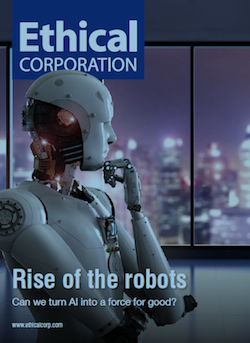

We’re on the threshold of a new era, where rapid advances in artificial intelligence, the internet of things, cloud computing, and automation will transform how we live and work.
Ethical Corporation has just published a new 40-page briefing that delves into the impact of AI on business and society and I wanted to send this across to you -you can access the report here.
There’s 40-pages of expert response and analysis from the likes of Danone, Nike, Flex, AT&T, PwC, Infosys, Microsoft, Sodexo and many more on:
- All change: How AI is disrupting business
- The reskilling challenge: Who will mind the robots?
- Apocalypse soon? Fears rise of AI arms race
- AI for good: How tech could transform sustainability
- Machine learning: Automation case studies
Click here to receive the 40-page briefing
Media Contact:
Ed Long
Project Director
Ethical Corporation
+44 (0) 207 375 7188
The Plastic Straw Ban: When Inclusiveness Drives Discussion


The push for a global ban on plastic straws has been gaining momentum in recent weeks -- with critics lining up on both sides of the issue to make their concerns known.
San Francisco, which is home to several hundred niche tea shops, is crafting its own controversial bill to nix the product from city streets. According to the bill, not even compostable plastic straws will be allowed to be served within city limits.
And rum distiller Bacardi has teamed up with Lonely Whale to remove billion straws from circulation by 2020, promoting the initiative with the hashtag, #thefuturedoesntsuck.
Bacardi says it will kick off the campaign by removing straws from all of its public events. The two organizations are also encouraging consumers to express their support for banning straws by telling their server they don't want a straw whenever they order drinks. The company says it is working to reduce other plastics from its supply chain as well.
Straw freedom
But not everyone sees the effort to eradicate the use of plastic straws as a sign of enlightened progress.
In San Francisco, proprietors of bubble tea shops are criticizing the ban, which they say threatens their very ability to stay in business. The straw that is served with the bubble tea is an iconic part of the drink and fashioned specially to accommodate bubble tea, which comprises "bubbles" made of tapioca that are meant to be sucked out by a straw. Since the ban was announced, proprietors have been scrambling to build up their stock of paper straws, which come at a cost premium, can take months to order and also, say critics, do not work as well as plastic straws.
And for other critics, the straw has become the latest symbol of freedom of speech and expression. As the push to eliminate straws from public supply has grown, so have the strident voices of those who see the effort as an attack on their rights. One tweet by a gun-rights advocate included a photo of her holding her AR-15 and oversized drink cup with a straw. Her message, while some might argue missed the point of the environmental movement, was pretty clear: any effort to curtail the production of something that some may want is an infringement on rights, even if the use of those products infringes on the rights or safety of others.
“Hey, GOVERNMENT, you can’t take my AR-15, so what makes you think you can take my plastic straw?” she wrote. “I don’t need your permission, you are subordinate to me, and that’s the world you’re stuck living in.
https://twitter.com/ARmastrangelo/status/1023291321199542272?ref_src=twsrc%5Etfw%7Ctwcamp%5Etweetembed%7Ctwterm%5E1023291321199542272&ref_url=https%3A%2F%2Fwww.theguardian.com%2Fcommentisfree%2F2018%2Faug%2F03%2Fplastic-straws-became-the-latest-victim-in-the-us-culture-wars
Building a case against data: the 9-year-old mathematician
Critics of the #banthestraw movement have also been quick to point out that the statistics on which many organizations based their decision to ban straws from their supply chain didn't actually come from the National Park Service -- but from an enterprising 9-year-old boy from Vermont who conducted his own research study in 2011, who concluded Americans use 500 million straws a day. It seems that age is no barrier for resourcefulness these days when it comes to getting to the source of tough environmental problems.
Milo Cress (who is now 17) from Burlington, Vermont fit the shoes for the job when he decided to sit down and calculate just how many plastic straws are being used and thrown away every day in the U.S. For companies like Starbucks, Bacardi and Pernod Ricard (who undoubtedly have measured just how much volume they do order each year), that figure was good enough for them to launch their global campaigns.
But for others, the young mathematician's age has presented a stumbling block to credibility, suggesting that if a 9-year-old actually took the time and invested the skills to count all the used and discarded straws in the U.S, per day, it must be a "estimate" not an evidence of why the planet has a known environmental problem (or a suggestion that the U.S. elementary school system must be doing something right).
What Mr. Cress' numbers did do is put the issue of accountability squarely into focus. Since his bold counting experiment, various organizations have taken the challenge and fact-checked his data. Yes, it's high. The research agency Freedonia Group put the number closer to 390 million, just about equal to the entire population of the U.S. That number suggests, as his data did, that Americans are using straws and discarding them at such a pace as to give the appearance that every single American is culpable of the environmental crisis wrought by plastic straws.
Plastic straws, inclusive needs
For all of the discussion over this issue, there's one topic that continues to be minimized: inclusiveness. Will removing something that's always been regarded an optional choice for most but is an essential assistive device for many stigmatize those who can't rely on alternative sources like paper or metal straws? Should today's hashtag sayings that vilify the use of a product that quadriplegic individuals rely on for sustaining life be given a rewrite?
Those may become important questions to ask as the planet continues to change its sourcing and production systems. There's always at least two sides to a debate, and so often, one of them has a compelling, human need to be heard.
Image credit: John Ong (Flickr)
Making the Case for Sustainability: A U.S. Coast-to-Coast EV Tour
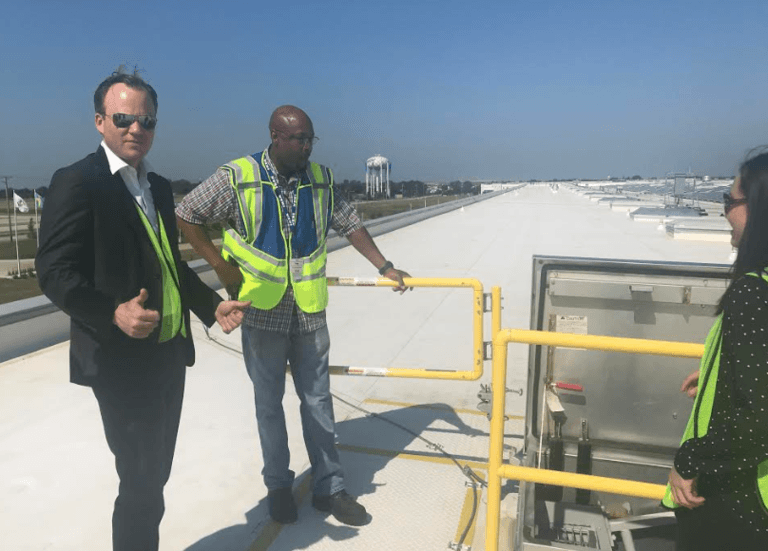

Since moving to the United States from France last year, I have been anxious to understand how American corporations are thinking about sustainability. From an external political perspective, we have witnessed the United States withdraw from the Paris Agreement and the changes with EPA leadership to name a few signals of uncertainty, and it’s been unclear what direction the country was taking.
At the same time, we’ve seen the increased resolve of mayors, governors and business leaders to pledge to reduce emissions and stem the causes of climate change. I knew I had to take the road to see for myself firsthand what is actually happening with U.S. businesses and their sustainability efforts.
So, I set off in an electric vehicle (and other modes of transport) with my ENGIE Insight colleagues on a grassroots coast to coast sustainability tour to canvass the US, stopping to visit ten cities in ten days. Along the way, we met with U.S. business leaders, innovators and influencers to gain insight into the strategies, successes, and underpinning innovations as well learn the specific challenges that organizations are facing. We designed the tour to get an accurate sense of what’s really going on and to spark conversations on what we learned on a spectrum of sustainability topics like renewable energy, blockchain, energy efficiency, water conservation and waste reduction projects and more. From there, we also wanted to gather all the intelligence we could and use it to help inform the work we do at ENGIE Insight to support clients in their commitment to sustainability.
Over the course of two weeks we met with more than 130 companies and organizations across industries. It quickly became clear there is a convergence of trends influencing the state of sustainability in the U.S. and they are consistent across industries and regions regardless of whether we’re talking about a retail company with locations across the country to a restaurant whose primary presence is in the Northeast. Here are the top three trends I saw consistently throughout my sustainability tour experience.
Sustainability Investment, Now
We’ve seen more and more companies continuing to invest now in energy and sustainability solutions that benefit business, consumers and our environment. Solar power, for example, is in a constant state of innovation. During the tour, I had the opportunity to visit the largest rooftop solar array at an IKEA distribution center outside of Chicago, this solar system alone produces enough energy to power over 271 homes. Businesses continue to be financially attracted to go solar as costs come down. Companies like IKEA are investing in these systems not only because it’s cost effective but because it’s an ingrained part of their company operational plan as they scope new buildings.
Beyond renewables, we’re experiencing a big wave of sustainability innovation that carries with it impressive breakthroughs. Take Lutron Electronics, a company specializing in cutting-edge energy-saving lighting and shade control. We met with Lutron on the Washington D.C. tour stop and they spoke with us about how their customers are using smart lighting control systems and concepts like daylight harvesting to save energy and create the optimal working environment for people. They even proved to us that dimming lights by 20% can be naked to the human eye! More and more choices will come with all of this innovation and will open even more opportunities for businesses to continue to invest in sustainability.
Data and Insights
Across the board companies shared how they needed more data to justify the business case for holistic sustainability initiatives. They are not just thinking of energy only, or waste only or water only, they are looking at the nexus of these resource areas together to find opportunities on how to save. Arby’s has identified over $39 million dollars of energy and water savings by monitoring their equipment individually, using the related data and applying analysis to help predict equipment performance, temperature tracking, cooking platforms, reduce overall consumption and better predicting budget forecasting. It helps make all the other sustainability work they’ve done that much smarter. Overall, this holistic approach based on data and the notion of how to scale was in virtually every conversation we had. Companies know it makes financial sense to invest in sustainability projects. The data provides the foundation to pilot projects and understand where the greatest impact will come.
Stakeholder Excitement and Pressure
Fifty years ago the U.S. government set the environmental standard, through regulations and legislation like the Clean Air Act or Endangered Species Act. We learned from environmental legislation pioneer and founder of Earth Day, Denis Hayes, that a massive amount of work was done to get the country to a steady state during this time. Now, this effort has pivoted to being led by businesses and they’re ambitious about setting emission reduction goals complete with carbon reporting. Today, sustainability strategy goes hand in hand with business success. The investor community sees huge potential in financing climate action. Not to mention, consumers are demanding it and making these demands known through brand loyalty and spending decisions. It was inspiring to hear about the work our customers have done to formalize their commitments to environmental sustainability and turn them into real action both to gain consumer loyalty, but also as a mechanism to drive employee retention.
Case in point: GameStop pushed sustainability missions through their corporate office by talking about how to engage employees in a different way. Chick-Fil-A hosts bee hives at their corporate headquarters to help give their teams a unique, local experience while also serving the environment. Companies like Haverty’s are thinking about how to deliver to their customers a better overall shopping experience which includes optimized lighting, a beautiful store environment along with a lighter footprint while ingraining sustainability as a key pillar to the company mission.
It was an amazing experience to take a classic American coast to coast road trip this summer and meet with companies all across the country who are leading the sustainability charge. I learned that we are at the next level of a sustainability revolution and businesses are at the forefront of driving real environmental change. Sustainability is evolving to an operational imperative for businesses ingrained within the company mission– not merely something that’s a ‘nice thing to do.’ I saw evidence of this again and again over the course of the trip, and my team and I will continue to apply these insights to our work helping businesses solve their critical energy and sustainability problems and build achievable sustainability roadmaps to support their business success for the future.
Image credit: ENGIE Insight
Retailers: DIY Shouldn’t Be Deadly


When the federal government fails to take action on a major issue affecting the American public, the private sector has an opportunity and a responsibility to step in as part of its commitment to corporate social responsibility. That’s certainly the case when it comes to methylene chloride and N-methylpyrrolidone (NMP), two toxic chemicals commonly found in products at your local hardware, big box or automotive store.
Over the past year, the Environmental Protection Agency (EPA) has failed to finalize an Obama-era rule to ban these chemicals in paint strippers, which was first proposed after bipartisan chemical reform legislation passed in 2016. This ban was proposed because the EPA’s own research show that these compounds pose unacceptable public health hazards. Methylene chloride has been linked to more than 60 deaths in the United States and NMP is a reproductive toxicant. Risks include cancer, miscarriage, harm to children’s brain development, and even sudden death. As a result, these chemicals poses significant liabilities to companies that continue to manufacture and sell them.
But over the past six weeks--while the EPA continues to drag its feet--the tide has begun to turn on these dangerous products as corporate America moves to ban their sale. To its credit, Lowe’s stepped up and became the first major U.S. retailer to ban the sale of toxic paint strippers. Its policy commitment has led to a domino effect, with The Home Depot and Sherwin-Williams quickly following suit. All three companies have committed to remove these harmful products from the shelves of their 8,500 total stores by year’s end.
This momentum is part of a growing trend emerging in the retail sector. In order to meet the rising consumer demand for safer products, companies are increasingly eliminating harmful chemicals as a key element of their corporate sustainability programs. More than ever before, retailers recognize that safeguarding their customers from dangerous chemicals is not only the right thing to do; there is a strong business case to do so. The sale of toxic chemicals such as deadly paint stripper products poses increasing reputational and legal liabilities to American retailers and brands due to the dangers they pose to customers’ lives. Meanwhile, consumers have become increasingly vocal in their demands for healthier and safer products, swiftly abandoning brands that don’t meet these needs.
Because it is heavier than air, methylene chloride can settle in a bathtub or other indoor space and expose users to high concentrations of the chemical in a short period of time. In February, 31-year-old Joshua Atkins died while refinishing his BMX bicycle with a paint stripper containing methylene chloride. At least three other people have died using these products since EPA’s ban was proposed. According to the agency, more than 60,000 U.S. workers and two million American consumers are exposed to methylene chloride and NMP annually. Subsequent injuries and deaths could damage a company’s reputation and brand and lead to expensive litigation.
Companies that sell harmful products could also find themselves the target of customer ire. This spring, more than 200,000 consumers nationwide signed petitions to Lowe’s urging the company to stop selling dangerous paint strippers, and activists picketed outside of stores during the company’s busy spring shopping season.
Committing to safer chemicals policies enables retailers and brands to enhance their reputation and enjoy stronger profits and growth. Consumers, particularly millennials, are certainly paying attention. For instance, Unilever recently revealed that its “sustainable living” brands grew nearly 50% faster than the rest of its business over the past year. As a result, the company is working to reduce the environmental footprint and increase the positive social impact of all of its brands.
Investors are paying attention as well. When revelations emerged in 2015 that elevated levels of formaldehyde were found in Lumber Liquidators’ wood flooring products, stock prices plummeted by 70% and the CEO was forced to resign. Corporations can expect to see either market growth or losses based on their approach to toxic chemicals.
Given the significant business liabilities and dire customer health risks posed by the manufacture and sale of methylene chloride and NMP paint strippers, American retailers and manufacturers should halt the sale of these toxic products in favor of safer, cost-effective alternatives. Walmart, AutoZone, Ace Hardware and other companies that continue to stock these dangerous products must close this gap in their corporate social responsibility policies once and for all. If the EPA won’t act, retailers must step up to protect their customers, and indeed, their reputations.
The time is now to set higher expectations for consumer safety and for corporate social responsibility. The establishment of safer chemical policies, particularly when it comes to methylene chloride and NMP, is not simply a short-term trend; it is a new paradigm in the retail sector. Lives, and company bottom lines, are at stake.
Image credit: Safer Chemicals, Safer Families
Yes, Even the Rail Sector Says It’s Committed to Climate Action


When one thinks about the impact the global transportation sector has on climate change, it is easy to give the global railway sector a free pass. After all, it is intuitive that moving people and products by rail is far more efficient and environmentally friendly than using diesel-fueled trucks and ships, right?
But in the European Union, the region’s rail industry says it is not satisfied with estimates suggesting it contributes only 1.5 percent to the EU’s total carbon emissions, while taking up an approximate 8.5 percent market share of the entire transport sector.
On that point, a coalition of 11 companies in the rail sector, Railsponsible, says it is committed to do what it can to support the Paris Agreement in limiting global average temperatures this century to under 2°C. The group, which is a BSR-facilitated initiative, says it has three broad goals: commit to a clean energy target, develop a long-term energy productivity target and become more transparent about climate change information.
The question then arises: so what exactly do these railway companies, which together spend €36 billion ($41.6 billion) on procurement, have planned?
To start, various Railsponsible members have developed various goals, and remember, such targets do not apply solely to the rails. For example, the Dutch rail operator Nederlandse Spoorwegen (NS) has set a zero emissions goal for its buildings and mobility, the latter of which encompasses trains, automobiles, and buses. NS’s German counterpart, Deutsche Bahn, has more long-term objectives, saying it will use only 100 percent renewables by 2050 (probably understandable, as Germany is about 8.5 times the size of its northwestern neighbor).
Then there are the relative targets, which for the most part align with the aforementioned energy productivity goals. France’s rail giant, Alstom, says it is focused on decreasing its services’ energy consumption requirements 20 percent by 2020, using 2014 figures as a baseline. Knorr-Bremse, a braking systems manufacturer based in Germany, has pledged it will continue to boost production in 2020 without an increase in carbon emissions, based on 2015 benchmarks.
In addition, Railsponsible says it will enact policies that will help the rail sector become more sustainable across its entire value chain. These include a minimum sustainability requirement for all suppliers; certification requirements for all major energy-intensive suppliers; and the introduction of a greenhouse gas emissions assessment clause in all of its members’ transports and logistics contracts.
To date, Railsponsible’s largest achievement is the effect it is having on the industry’s supply chain. In a recently issued climate change position paper, the group said 859 suppliers and counting have joined the coalition’s assessment program – and such buy-in demonstrations that having a more sustainable supply chain means cajoling and collaboration with suppliers, not coercion.
Image credit: Nik Morris/Flickr
Business 2018: Values Matter, More Than Ever
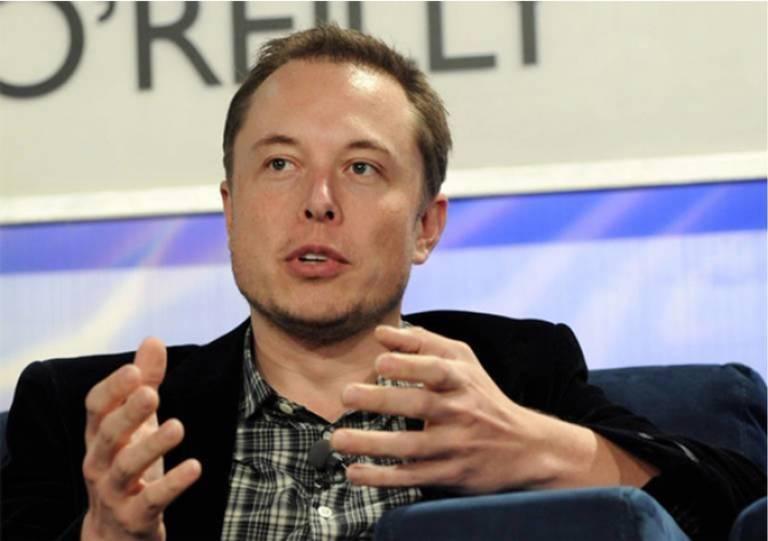

The intersection of business and values has been the site of several collisions lately—some accidental, some accidents waiting to happen.
While the subjects in question have varied from CEO activism and governance to issues of ethics and data privacy, the end point is the same: In business 2018, values matter, more than ever. No company looking to its future viability can afford to avoid making choices—and statements—about what it stands for while avoiding pitfalls and misguided actions.
Taking the “right” positions in business can be as difficult as foreseeing future growth and profitability at a time of maximum political uncertainty and market disruption. The hard work of getting it right is illuminated by some recent examples of major companies getting it wrong in areas of major concern.
- CEO activism. A negative spotlight shone on Facebook’s Mark Zuckerberg, who defended the site’s publishing of posts by Holocaust deniers; Tesla’s Elon Musk who falsely name-called a rescuer of the cave-bound Thai boys; and Papa John’s founder and former CEO (now former chairman) John Schnatter, dismissed for racial slurs (he’s now suing for reinstatement to the board). The incidents highlighted the risks to an organization when the chief executive of a company is “the face” of the business. The brand reputation and share price of all three companies suffered—Facebook suffered a $120 billion drop in valuation when it announced the belated hiring of 20,000 new employees to deal with issues of fake news and privacy and projected declining revenue in a context of ongoing questions about the privacy of the data it collects.
- Ethics. Among brands taking a beating for governance failure was Ivanka Trump’s fashion line, which shut down among ongoing questions about using political status for personal gain—and after Hudson’s Bay Company announced that it would stop selling the line, joining major retailers Marshall’s, Nordstrom, and T.J. Maxx, which had previously discontinued it. Burberry was called out for burning $37 million worth of unsold products “to protect intellectual property,” a stance that drew criticism from politicians and shareholders, as well as environmentalists.
- Brand positioning. Washington hamburger chain Z Burger published a Twitter ad touting its burgers using an image of a US journalist moments before he was executed by ISIS terrorists. Everyone involved apologized.
- Operational stumbles. Google was fined $5 billion by the EU for antitrust violations. This follows last year’s EU fine of $2.7 billion fine levied against the company for manipulating search results. Twitter’s stock fell as the company purged thousands of what it admitted were fake accounts and reported fewer users.
These missteps by big brands are speed bumps, not barriers, to better practices. As Dr. Daniel Korschun has noted, “companies can’t avoid politics and shouldn’t try to.” That’s also the title of his Harvard Business Review article, co-authored with N. Craig Smith. “Business as usual now means including considerations of worldviews and values as well as the quality of products and services in strategic planning,” Korschun and Smith argue.
Mistakes are inevitable. As Korschun puts it, “Clearly, our often-divided political environment poses some danger for companies.” But he claims that there is no choice: “Executives who wish to respond fully to the needs of their stakeholders will need to embrace the new reality if they hope to succeed.” Transparency, consistency, materiality, leadership— a commitment to these qualities will determine the success of any purpose-driven company that stakes out clear positions on the issues of the day, from taking a stand on socio-political issues to internal practices, such as diversity and inclusion and employment engagement programs. Korschun elaborates on these ideas in an e-Book, Stand or Sit: Changing Roles of Companies & CR Directors in Politically Divisive Times, published by 3BL Media.
Want to receive the Brands Taking Stands newsletter by email? Sign up here.
4 Ways the Private Sector Can Help Take on Water Pollution
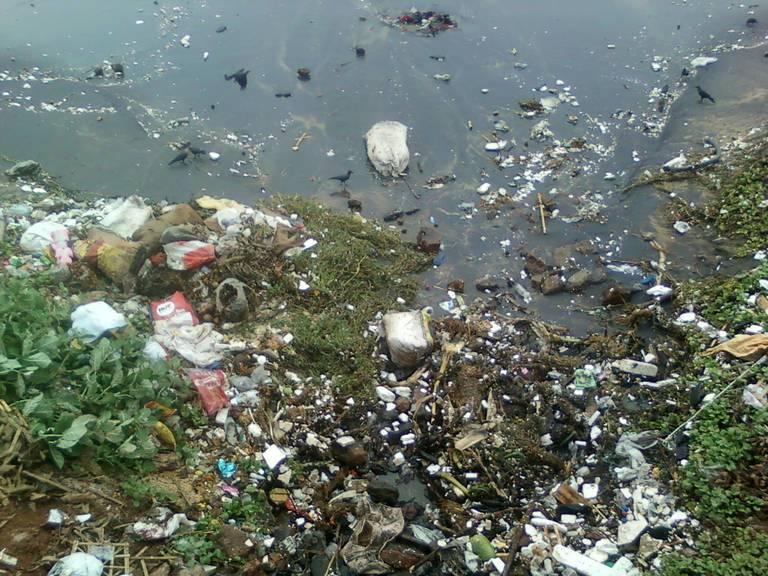

By Scott Huntington
Water pollution is one of the most significant threats to the environment and human health, as well as the economic well-being of many countries around the world. Everyone needs water to live, yet much of the limited freshwater we have access to is polluted. Oceans, which provide critical environmental services, are also contaminated with various types of pollution.
Although humans are causing this pollution, we are also using various approaches to reduce it. Here are some of the most significant actions currently being taken to reverse and prevent water pollution, and how the private sector is helping out.
Cleanup Initiatives
From volunteers picking up trash by hand along shorelines to engineers inventing high-tech machines that patrol the ocean for litter, people are working to remove some of the pollutants that already exist in our waterways.
The first such machine is expected to deploy soon to the Great Pacific Garbage Patch, an aggregation of approximately 1.8 trillion bits of plastic. Within five years, it’s believed, the machine will be able to clean up half of the patch. The device comes from Ocean Cleanup, a technology company created by Dutch inventor Boyan Slat when he was just 18 years old.
Consumer product companies (CPG) have stepped up as well by using recovered ocean plastic to make clothing and shoes, packaging, carpets and more.
Improving Trash Management
We produce vast amounts of plastics every year, and much of it ends up littering the natural environment. It's been estimated that 8 million tons of plastic end up in the ocean every year. Other types of trash pollute our waters, too, making better management of this waste a critical step to take to clean up our water.
Part of the solution is reducing the amount of single-use plastic items we use. More companies, such as Starbucks, have started to take a stab at this by banning plastic straws.
Individuals are helping out by opting for reusable containers and recycling more. Looking for products made from and packaged with recycling materials, then reusing or recycling those items instead of throwing them away, can help reduce the amount of plastic entering the oceans.
Reducing Nutrient Runoff
Abnormally high levels of nutrients in waterways, caused by runoff from fertilizers, are another significant water pollution problem. These nutrients are a natural part of water ecosystems, but in overly high concentrations, they cause excessive algae growth. These algae blooms reduce the amount of oxygen in the water, killing fish.
This nutrient runoff comes from farms, as well as fertilizer used for lawns and gardens, which wash into waterways with rain.
We are seeing more companies work with farmers to to prevent runoff by encouraging them to reduce the amount of fertilizer they use, avoiding using it before it rains and capturing runoff in retention ponds.
Cleaning up Wastewater
Industrial facilities, sewage plants and mining operations discharge wastewater into rivers and lakes, causing a significant portion of the world’s water pollution.
In developed countries, this wastewater discharge is regulated, reducing its environmental impact. In many places around the world, though, companies do not treat wastewater before releasing it into waterways. It's estimated that 80 percent of wastewater gets discharged without any treatment.
In the United States, the Clean Water Act regulates wastewater discharge. Rules such as these, alongside support from the private sector, can greatly improve a country's water quality. Countries that have adequate wastewater treatment need to work with those that don't to help them get them the technologies they need to improve wastewater treatment there.
Ongoing Research
Along with universities and government agencies, more companies are working to further our understanding of the current state of water pollution, its impact, and how we can prevent and mitigate it.
Carl Allen, for example, recently sold his family’s company, which makes institutional garbage bags, and is now dedicating his time to studying plastic pollution and fish migration. With his new venture, Allen Exploration, he plans to take water samples at various depths to measure the concentration of micropollutants.
There are also innovators like Boyan Slat, who are coming up with new ways to remove pollution from the ocean or minimize the amount of trash we produce in the first place.
Water pollution is a massive problem, but people are tenacious, so you can expect people to continue working to solve it. It's critical that they do, since the condition of our waters is crucial to the health of every living thing on Earth.
Image credit: Aditya Madhav/Wiki Commons
Five years after the Rana Plaza disaster, the Bangladesh apparel industry marks major workplace safety progress
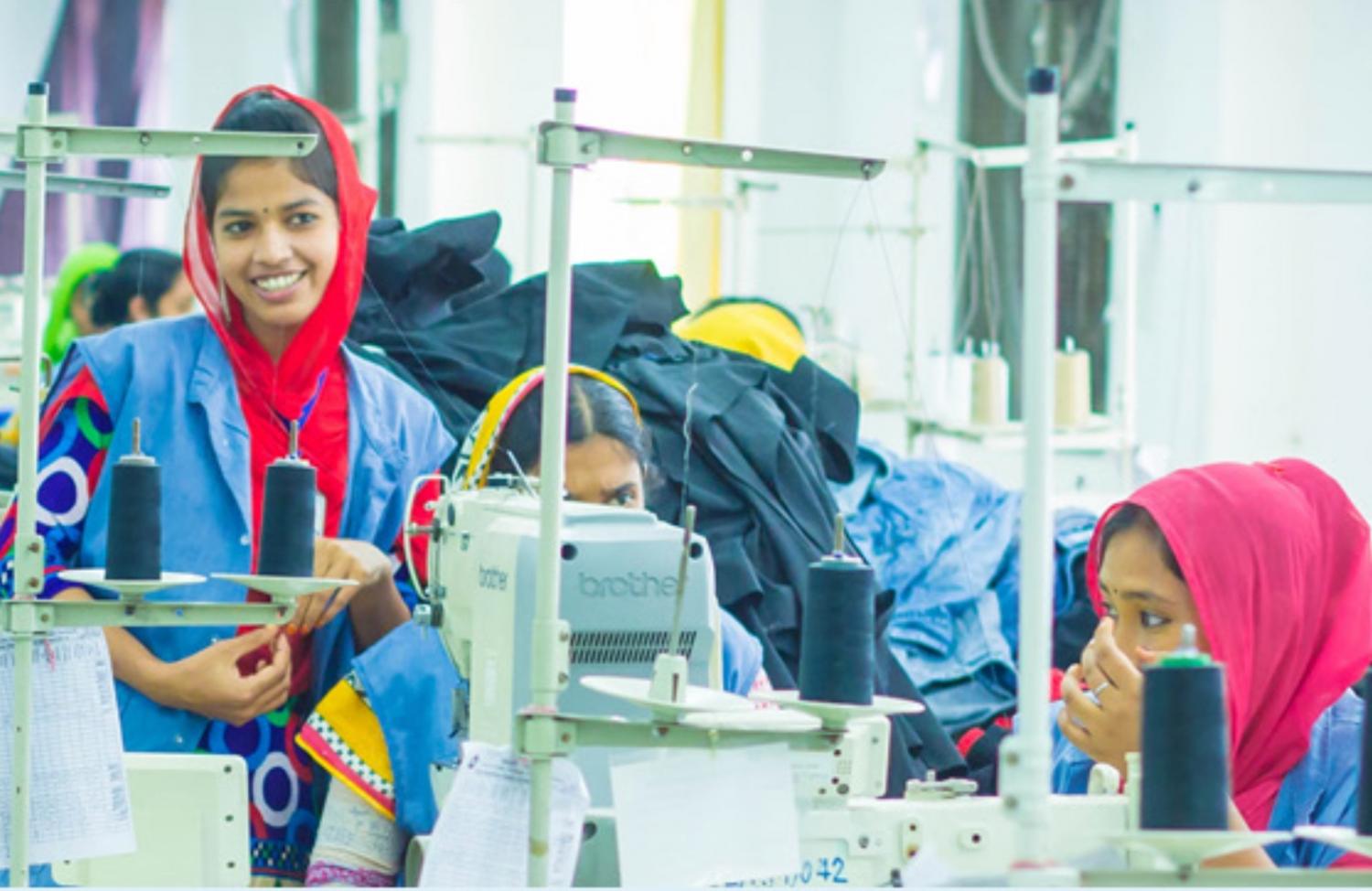
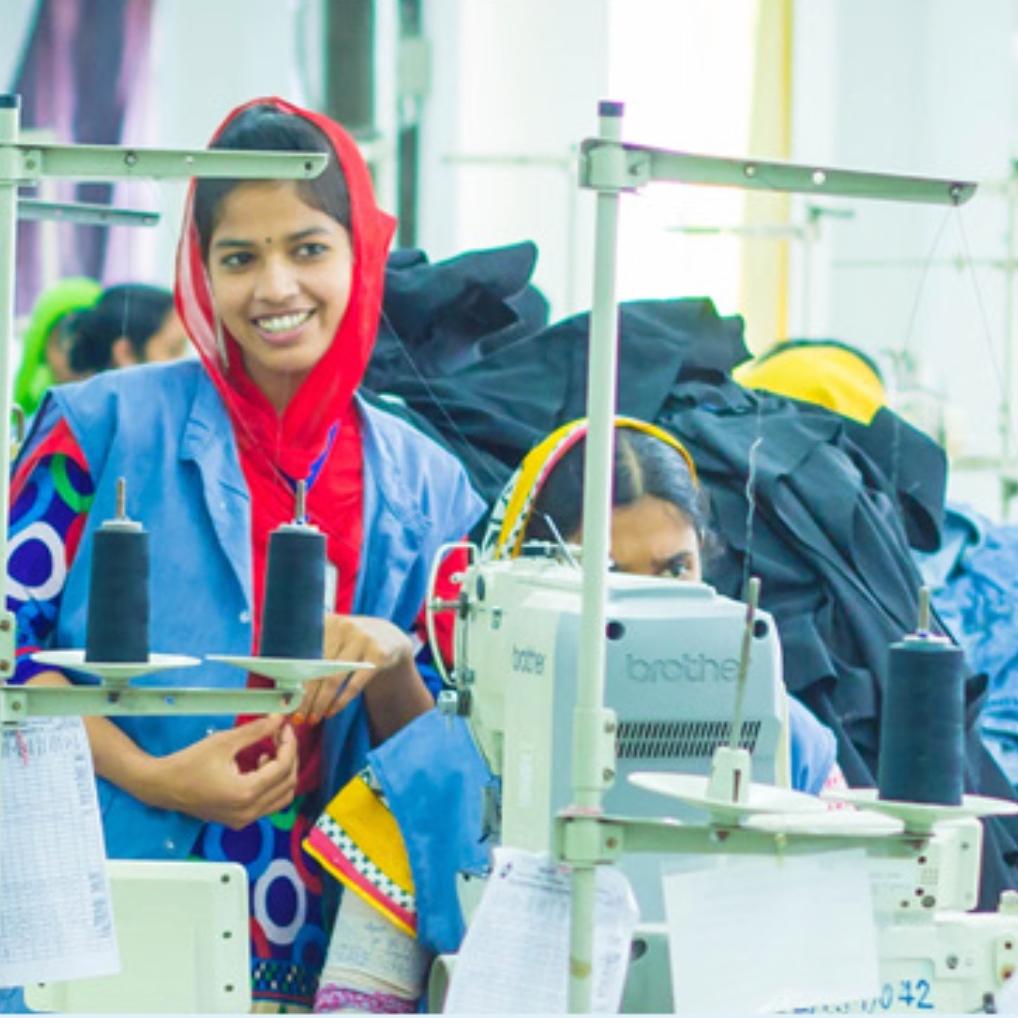
Bangladesh, widely condemned for permitting appalling workplace conditions, is now among the world’s safest countries for employees in the ready-made garment industry.
The claim was made by an influential safety campaign group as it prepared to hold up Bangladesh as an example for the apparel industries of Vietnam and India.
The Alliance for Bangladesh Worker Safety was formed by 28 large global retailers after the 2013 garment factory building collapse in Dhaka district that killed 1,134 workers. The Alliance responded to the tragedy with a five-year safety programme.
The result, after the five years, is that Bangladesh “has become one of the safest places for ready-made garment workers in the world”, said Sean Cady, global supply chain vice-president at the North Carolina-based computer and data company VF Services, an alliance member whose brands include The North Face, Timberland and Wrangler.
He reported that Bangladesh’s apparel export trade has expanded thanks to the transformation brought about by the Alliance and other campaigning bodies. The number of factories is unchanged but existing producers are receiving more orders.
Cady said: “We should all be proud of Brand Bangladesh. Brand Bangladesh has a strong reputation.”
The Alliance is now about to visit Vietnam and India to promote its Life and Building Safety programme, aimed at enhancing building, fire and electricity safety based on the improvements achieved in Bangladesh.
After Vietnam and India, it will extend the programme to Cambodia, Pakistan and Myanmar.
However, the activities of the Alliance and Accord, another campaigner, which drew up a workplace safety agreement signed by retailers and trade unions after the Rana Plaza and other factory disasters, may soon cease in Bangladesh.
Md Mujibul Haque, the Labour and Employment State Minister, has said the tenure of the Alliance and Accord will be terminated as their job will be done by the Remediation Co-ordination Cell, the government department responsible for managing garment industry reforms.
The Alliance has agreed to close its Bangladesh operations by January 1. The Accord wants an extension.
Sustainable Charities: Operation Warm Makes it Easy to Give Green


As companies take more steps to make their operations sustainable, they begin holding their suppliers to higher standards. Unfortunately, the green supply chain can still fizzle out when it comes to charitable giving. A simple school supply giveaway, for example, can involve conventional manufacturing, transportation and distribution systems -- and all of the carbon-loaded, resource-draining baggage that comes along with them.
On the plus side, there is a growing movement to provide more sustainable pathwways for corporate giving. The organization Operation Warm is one good example. Since 2002, Operation Warm and its partners have donated more than two million brand new winter coats directly to children in need, and this year it is offering a new green twist: coats made with recycled PET #1 plastic bottles.
A sustainable giving solution
Dubbed "Green Guardian," Operation Warm's new PET coats provide corporate donors with an opportunity to merge sustainable principles with a traditional form of charitable giving.
Triple Pundit was curious what motivated Operation Warm to provide a sustainable alternative to donors, and their communications team provided an answer from Grace Sica, Vice President of Corporate Partnerships:
Operation Warm has a simple mission: we provide children in need a brand new coat. We are committed to continuous innovation around that mission. This year our decision to use recycled PET was driven by the increasing global awareness about the overuse of plastic. Starbucks is eliminating straws, municipalities are banning plastic bags and we are using recycled plastic to make our coats.
Ms. Sica also explained how the use of sustainable materials provides Operation Warm with an opportunity to make an impact far beyond its initial mission:
We believe sustainable principles should be a guiding force in all business and charitable activities. Too often sustainable products are marketed as a niche or high end good. We are in a unique position to make sustainable apparel available to children living in poverty and at low income. These children are going to be so excited to know that they are getting more than a coat. With these coats we are also building future environmental stewards.
Lee Fulton, Director of Strategic Initiatives for Operation Warm, also emphasized how recycled PET broadens the organization's mission:
Sustainability has so many facets that we work to improve. Using [recycled] PET helps us support the UN Sustainable Development goals in several ways. Reducing the use of virgin fibers and preventing plastics pollution are pretty obvious ways that fabrics with recycled content positively effect our contribution to Climate Action, Life Below Water and Life on Land.Less obvious but equally important are Industry Innovation and Responsible Production, which are efforts that we help move forward through our Green Guardian manufacturing.
Charities need supply chain sustainability, too
Operation Warm is somewhat unique in that it does not simply buy off-the-rack items, much less collect used items for distribution.
Instead, the organization is focused on the child's experience of a brand new coat. Anyone familiar with the seasonal rite of gearing up for another winter will recognize the significance of a brand new coat to a growing child, especially if hand-me-downs are the norm.
To achieve that holistic focus on experience, Operation Warm works closely with manufacturing partners to ensure quality control. Children who receive the coats also get to select from a collection of up-to-date colors and patterns.
Now that the Green Guardian option has become part of the experience, Operation Warm could leverage the sustainable giving approach to expand its sustainability initiatives.
So far the organization has focused on its internal operations. For example, Operation Warm has decentralized its distribution system, helping to cut down on carbon emissions (and expenses) related to staff travel. Instead of sending in-house personnel around the country, Operation Warm has amassed a network of more than 800 local partners who manage its distribution events.
Another initiative in the works is the creation of a Volunteer Brigade, which will enlist local volunteers to manage events for coat donors.
As for taking the sustainability message to its corporate partners, there are opportunities in that area, too. Among the organization's supporters are the party goods supplier Unique Industries, the California-centric fashion brand Hollister and the Dunkin' Donuts franchisee Cafua Management Company.
It's also worth noting that another partner, FedEx, has already established itself in the vanguard of carbon action. The company's name is associated with the early adoption of green roofs, electric vehicles and high profile solar installations.
Image: via Operation Warm.
REDD: A Vital Part of the International Effort to Address Climate Change


By Vibeka Mair
Many of the world’s mythologies and religions give trees a deep and sacred meaning. And for millennia, trees have been storing vast quantities of carbon, representing a vital asset to tackling the climate change crisis.
Recognising trees’ value in reducing carbon emissions, the United Nations has a cache of policies known collectively as Reducing Emissions from Deforestation and Degradation (REDD+). Broadly, REDD+ provides a financial incentive to increase and protect forest cover.
Initial high expectations for REDD+, which launched around ten years ago, haven’t come to fruition. But, there are signs it could be set for a revival, presenting an opportunity for investors. REDD+ is the only global climate mitigation framework mentioned in the Paris Agreement. It has had recent interest from oil major Shell and the International Civil Aviation Organisation as a way of meeting carbon reduction targets. And the UN Green Climate Fund agreed on a $500m pilot for results-based payments for REDD+ last year.
The potential for forests in the battle against climate change is significant. There is 40% more carbon stored in forested lands than in known fossil fuel deposits worldwide, according to a recent report by Forest Climate Analytics. But, when trees and forests are cut down, this stored carbon has the potential to release back into the atmosphere. In 2013, the Intergovernmental Panel on Climate Change estimated that deforestation contributed to up to 10% of the carbon dioxide emissions caused by human activity.
A paper by the Woods Hole Research Centre finds that by stopping deforestation and allowing young secondary forests to grow back, the cumulative “forest sink” (that store carbon) could grow by over 100 billion metric tons of carbon by 2100, about ten times the current rate of annual global fossil fuel emissions.
The REDD+ framework tries to reflect that harvesting forests is often a matter of survival for many living in poor and developing countries. With no other way of making money, many communities in rural areas cut down trees for wood to build or cook with or for land to plant crops on.
So REDD+ offers a financial incentive for communities to not cut down trees. REDD+ works by issuing a carbon credit, or offset, for every tonne of greenhouse gas emissions reduced by saving an area from deforestation. The current REDD+ market framework names them Verified Emission Reductions (VERs) with one VER equalling one tonne of carbon dioxide prevented from being released into the atmosphere.
To successfully earn VERs it must be proved that the forest in a REDD+ project area is at risk of deforestation, with evidence of an area close by where trees have been cut down. Then there is a monitoring process of ensuring the trees in that project area remain, on a regular basis. This is independently audited and upon successful verification a REDD+ project is issued VERs that can be sold on the open carbon market.
Separate to ‘project level’ REDD+, there is the UN-REDDframework that works with countries on national plans to stop deforestation and generate emissions reductions to sell to other countries. There are now moves to integrate the two levels of REDD+ through a process known as “nesting”.
BNP Paribas buys REDD+ carbon credits to meet commitments around carbon reduction. Since 2012, the French bank BNP Paribas has implemented an active policy to reduce its direct impact on the environment linked to business activities including the reduction of direct CO2 emissions, low-carbon electricity solutions and partnerships to counteract CO2 emissions that cannot be reduced.
One of these partnerships is with REDD+ developer Wildlife Works. BNP Paribas buys Verified Emission Reductions (VERs) generated by its Kasigau REDD+ Project in Kenya. In order to offset residual emissions, VERs are bought and then deleted from the registry, meaning they can no longer be traded.
The voluntary carbon market, of which REDD+ is a part, was worth $191.3m in 2016, according to report State of the Voluntary Carbon Markets 2017. The report says it is a buyers market, as many offsets remain unsold. REDD+ can be more expensive than other types of offsets, but François Carré, carbon portfolio manager at BNP Paribas, says this reflects its quality: “What we call the carbon market today can be divided into compliance markets, such as Europe’s Emissions Trading Scheme (ETS) where companies are subject to regulation and the rest which in the absence of specific regulation is deemed to constitute the voluntary market. The voluntary market is a very stratified market, made of different type of emission reduction projects which use different type of methodologies.”
Carré says REDD+ projects also have a number of additional co-benefits which significantly contribute to UN Sustainable Development Goals (SDGs). “The UN developed methodology requires the project to be validated, with stakeholder consultation being part of the process. Every year you have monitoring done at the project level. And this monitoring is verified by an external auditor which certifies the project has been conducted in accordance with the methodology, only then the emission reduction can be issued. The whole process is standardised and open. In terms of recognition of the performance, it is important that the standard and methodology used is of very high quality.”
Along with being an offsetting tool, there are other reasons that REDD+ should matter to the finance community, according to Mike Korchinsky, founder of REDD+ developer Wildlife Works that conserves wildlife and supports rural communities in East Kenya.
Korchinsky founded Wildlife Works in 1997 based on the idea that market-based mechanisms were the best way to conserve wildlife and help rural communities live side-by-side (see separate Q&A with Korchinsky here).
He says there are increasing opportunities for direct investment in REDD+, “because it is a proven model which needs to scale up very quickly. We have 7 billion tonnes a year of emissions coming from the loss of forests and according to the UN Environment Program (UNEP) we need to reduce at least a billion and a half of those by 2030. There is no chance of meeting the two degree goal for climate if we don’t reduce at least a billion and a half tonnes of emissions from the forestry sector by 2030. So there is going to be an enormous opportunity to scale this model up.”
Wildlife Works direct investors includes German insurance giant Allianz and the Kering Group (owner of luxury brands like Gucci). In 2016, the International Finance Corporation (IFC) also issued a $152m Forest Bond in support of Wildlife Works’ REDD+ project in Kenya.
In a first of its kind, the bond was originally sized at $75m, but increased after high demand. Buyers included US pension giant CalSTRS and Australian insurers QBE.
The five-year bond allows investors to have the interest coupon, of 1.546%, paid in cash, REDD+ carbon offsets, or a combination of the two. Investors receiving REDD+ offsets can retire them to offset their carbon footprint or sell them on the voluntary offset market. Mining giant BHP Billiton provided $12m in a ‘price support mechanism’ to make sure the project gets an assured minimum revenue over the next five years if the bond investors choose cash over REDD+ credits.
Korchinsky says that the IFC is working “pretty aggressively” to replicate the bond and would like to do six more.
REDD+ should also be of interest to investors due to what it means for their portfolio companies trying to contribute to the UN’s two degrees target says Korchinsky. “A large company with a large carbon footprint that is part of the current economy may have constraints on how quickly they can move to a low-carbon future. Whether those constraints are technical, financial or social, there are many reasons why we can’t drop everything we are doing today and pick up low carbon options tomorrow, so companies are left with unavoidable emissions today.
“So there will be a transition and big companies will have to manage that transition and they have the opportunity to increase their influence over climate beyond reducing their source emissions, by offsetting their unavoidable emissions. Doing so by purchasing REDD+ emission reductions helps stop the destruction of forests around the world, protects biodiversity and creates sustainable development for forest communities, highly desirable outcomes which are impossible to achieve purely by focusing on source reductions in the mainstream economy.”
In a speech this March, Ben van Beurden, CEO of Shell, spoke of how it invests in Wildlife Works’ REDD+ project in the Kasigau Corridor, East Kenya. He told the audience: “What does Shell do about emissions that are hard to stop? Some sectors cannot reduce their emissions to zero yet. As I mentioned earlier, it is still impossible at this moment to make steel or cement without traditional fuels. So, the world needs a solution that approaches the problem from a different angle. This solution exists. This requires us to think of a future that is low carbon, when carbon free is not possible yet. And it requires catching the CO2 we emit or removing it from the air. This can be done by investments in nature. This is why we offer our business clients in the Netherlands the option of offsetting the CO2 impact of their fuel for a couple of cents per litre. Shell invests this money, for example, in the Kasigau Corridor project in Kenya. It is used to protect more than two hundred thousand acres of threatened forest. It has been used to plant more than fifty thousand new trees in the area. Before the end of this year, Shell wants to extend this possibility to all of our clients in the Netherlands.”
And in April, Shell joined the REDD+ Business Initiative (RBI). Established by a group of companies in 2017, the RBI is designed to help corporates integrate the conservation of tropical forests into their strategy to tackle climate change.
“There is no plan B for climate change without forests,” Prince Charles has warned, who calls REDD+ a vital part of the international effort to address climate change.
Vibeka Mair is Senior Reporter, Responsible Investor
Originally published on Responsible Investor.
Photo: Responsibleinvestor.com
Sign up for a free, no-strings trial to Responsible Investor